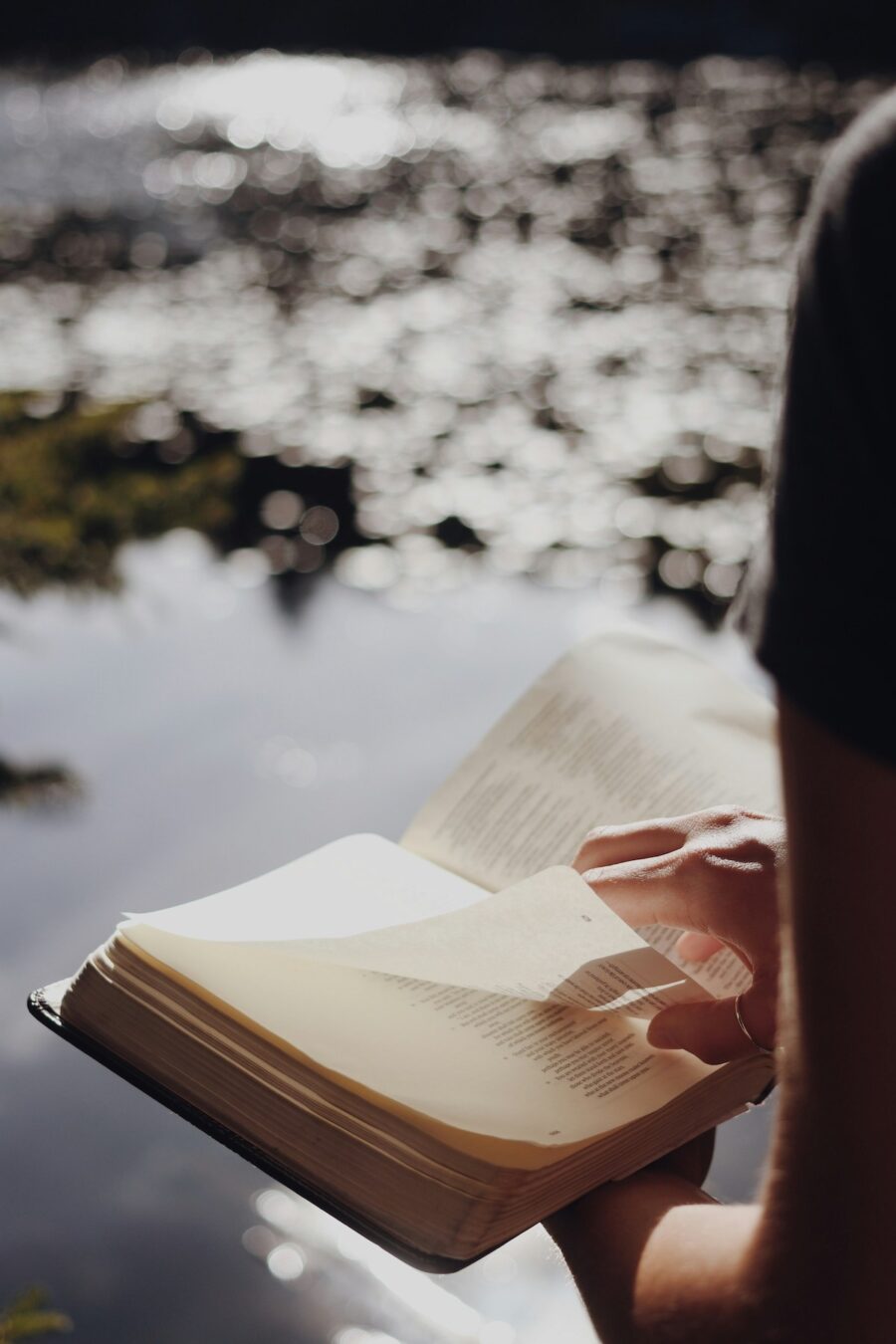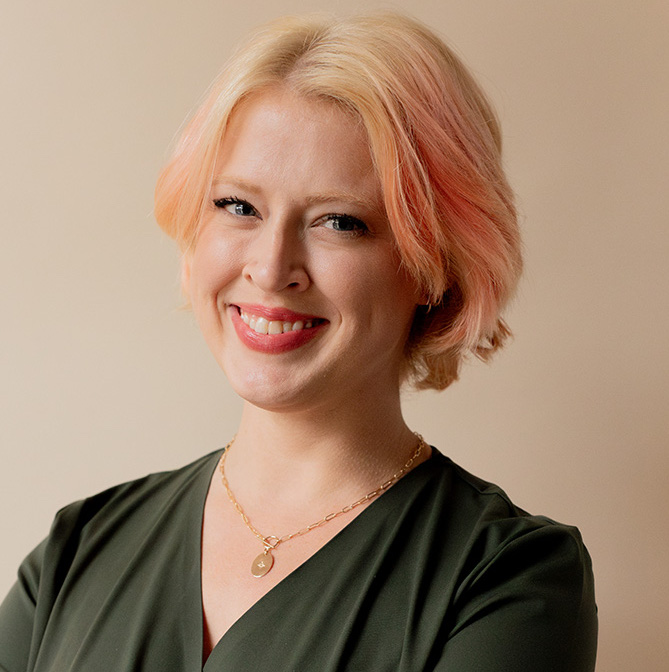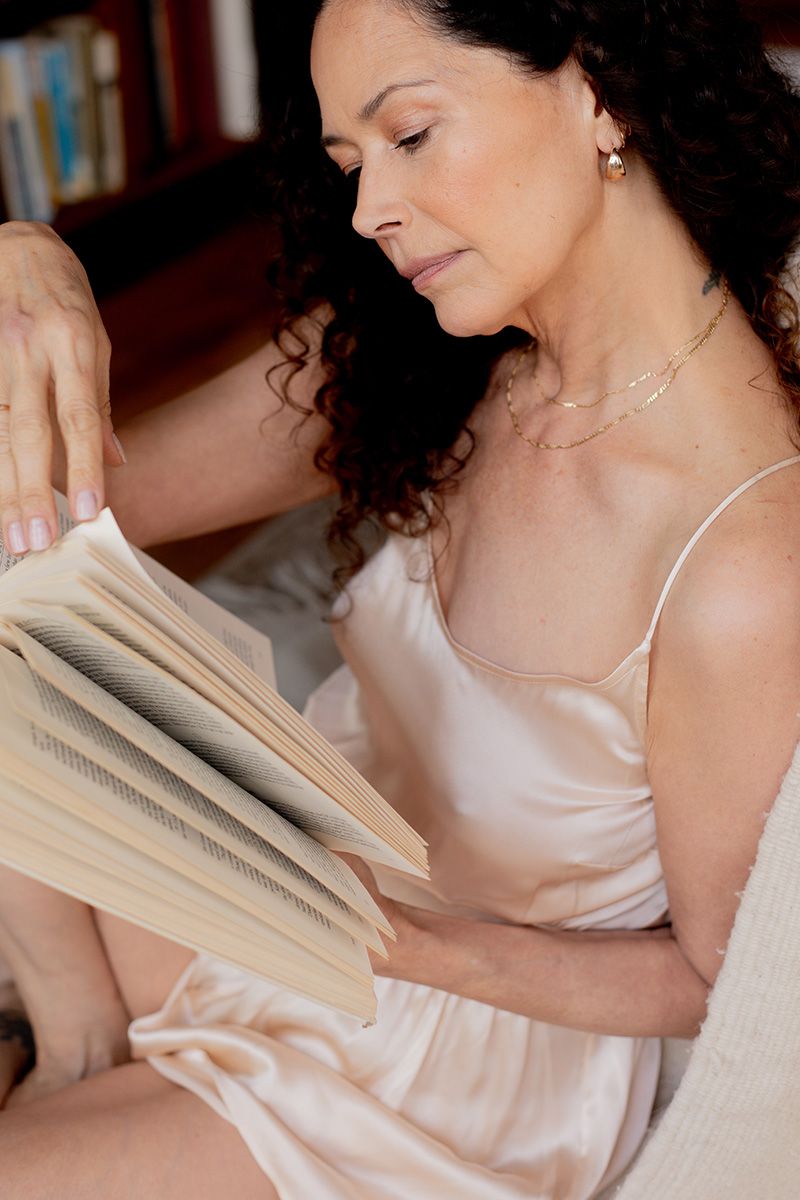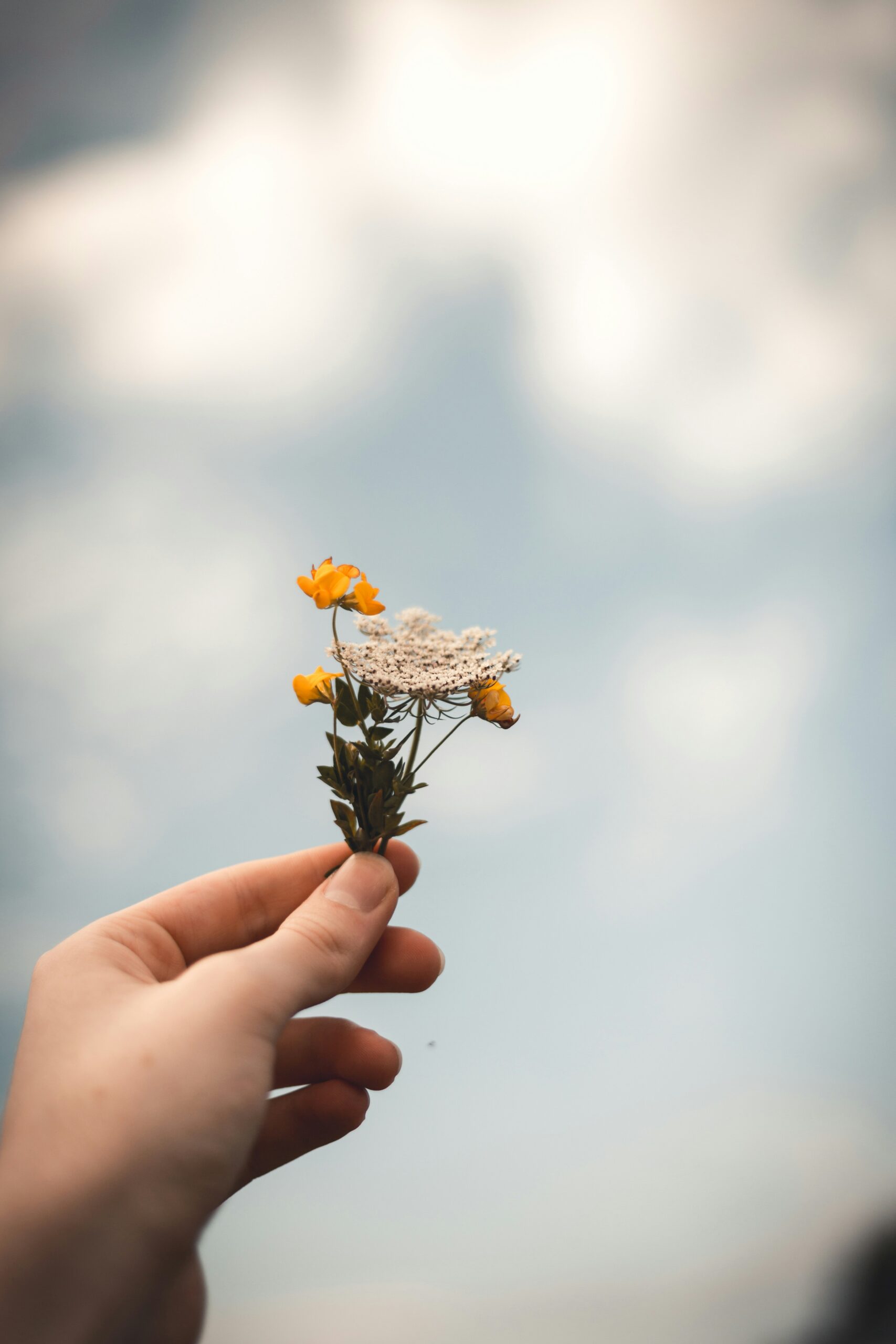
How To Read Poetry (And Love It) For Beginners
My first experience with poetry was sugary-sweet and dripping in rhyme. Dr. Seuss’s melodic stories captured my youthful attention, and I loved listening to how the words bounced off the page to form music of their own.
When I began writing poetry as a preteen, I invested my allowance in a rhyming dictionary. I rhymed the words “love” and “above” more often than I’d care to admit (with an occasional “dove” in there, too — WHY). I put my whole heart into poems I can only laugh about today; I’m amused and heart-warmed by the complexity I was trying to express with my ten-year-old vocabulary.
As I grew and my language developed further, I began reading the poetry my teachers fed to me in high school. Enchanted by the depths of Shakespeare and Emily Dickinson, I wanted more. But reading poetry outside of a structured academic space proved complicated for me — how do you read, enjoy, analyze, and remember the pieces you most love? Do you read 10 poems in rapid succession? One at a time? Do you have to sit in a velvet housecoat, surrounded by mahogany bookshelves and a crackling fire, to be considered ‘someone who reads poetry’? How do you even start?
“There is no proper way to start,” says Pádraig Ó Tuama, host of Poetry Unbound, a poetry podcast from The On Being Project. “Poetry is a vast ocean. In fact, it’s multiple vast oceans. And each ocean has thousands of beaches leading into it. Nobody will know everything about all the poetry. So if you’re interested, start where you are.”
Pádraig Ó Tuama, Poet & Host of Poetry Unbound
“Poetry is a vast ocean. In fact, it’s multiple vast oceans. And each ocean has thousands of beaches leading into it. Nobody will know everything about all the poetry. So if you’re interested, start where you are.”
How to choose what poetry to read
Poetry is a personal experience — for both the writer and the reader, so there really is an accessible place to start for anyone. I’ve found that poetry anthologies are an excellent place to start because they offer a range of voices within the frames of time periods, places, or topics. Ó Tuama recommends “The Ecco Anthology of International Poetry” edited by Ilya Kaminsky, and also navigating local bookstores and publishers, like Bloodaxe Books, that feature poetry arranged by topic. (If you’re in Los Angeles, I love The Last Bookstore downtown, and Stories in Echo Park).
“Poetry anthologies are an excellent place to start because they offer a range of voices within the frames of time periods, places, or topics.”
To continuously feed yourself new poetry, you can find local literary magazines, subscribe to Poetry Magazine, or sign up for daily poetry emails here or here. For thoughtful and immersive audio poetry, you can also follow the Poetry Unbound podcast, guided by Pádraig Ó Tuama. He recommends starting with the poems featured on that podcast, and also shared some of his other favorite poets: Marie Howe; Eavan Boland; Raymond Antrobus; Ilya Kaminsky (especially “Deaf Republic”); Joy Harjo; and Lorna Goodison.
Once you find a favorite poet, Ó Tuama suggests following the trail of their influences: “A quick online search might help you find out who the poetic influences on your favorite poet are. Reading Raymond Antrobus’ book of poetry ‘The Perseverance’ led me to read more of Caroline Bird’s work, a poet he thanks and admires enormously. Reading Seamus Heaney might lead you to Patrick Kavanagh. Reading Tracy K. Smith might lead you to Emily Dickinson.“
How to read a poem
You’ve selected the poem you want to read — congratulations! Now it’s time for the business of reading it. Here’s my process when I have enough time to truly savor what I’m reading (which, admittedly, isn’t as often as I’d like).
1. Examine the title and the shape of the poem
Before I read a poem, I examine the way it takes up space on the page. I find single-page poems with neat stanzas appealing — although a concrete poem (a poem formatted in a specific shape) is always playful and attention-grabbing. Perhaps meandering and novelesque text immerses you, or maybe you prefer short poems that could fit neatly on a box of TicTacs.
Next, read the title of the poem — how does it make you feel? How does the title fit the shape of the poem? If the title is sad, let the shape of the poem inform the nuance of the emotion — if it’s short and sparse, maybe it’s coming from a place of desolation or desperation. Long chaotic forms might mean it’s coming from a place of confusion or anger.
Now, set your expectations to the side, and begin reading.
2. Read the poem as you normally read anything
“What is it that the poem knows about me that I don’t yet know about me? Maybe it provides a bit of comfort for a part of my life that’s comfortless. Or maybe it provides challenge where I need it.”
Pádraig Ó Tuama
Reading poetry doesn’t require a highfalutin approach; you can read as you’d read anything else. On the first pass through, absorb whatever it is that arises upon first impression. Notice where in the poem you react — maybe your stomach churns at a particular phrase, or you hold your breath at a certain line. Explore the feelings that come up as you read.
“I listen to myself, and wonder what the poem is drawing out of me,” says Ó Tuama. “What is it that the poem knows about me that I don’t yet know about me? Maybe it provides a bit of comfort for a part of my life that’s comfortless. Or maybe it provides challenge where I need it.”
3. Re-read for meaning
If the poem captivates you or rouses your emotions, you can uncover even more information on a second read-through. Half of the time, I dive right into a re-read. Otherwise, I add a bookmark to remind me to read it again later and move on to the next poem.
If you didn’t feel a connection to the piece, it’s okay to skip over re-reading the poem (although I do recommend giving it another chance). You might come back years later to a particular poem, only to find that it connects to your heart in ways it didn’t before.
The second read-through is where I look up definitions and pronunciations of words I don’t know and examine any footnotes. If there’s historical context or the poem is referencing a specific event I’m not familiar with, I’ll look that up, too. Having this knowledge adds weight to the poem, and makes each reading feel like a reverence. (Rita Dove’s “Parsley” is a devastation, and opened up a part of history I had never learned.)
“You might come back years later to a particular poem, only to find that it connects to your heart in ways it didn’t before.”
I look for little clues I may have missed — word choices that bolster the metaphor, repetitions that indicate a deeper theme, or unusual line breaks that alter the meaning of a phrase. Here is where I also consider the speaker of the poem. Is it the poet themselves? Is it an omniscient being, or a single narrow perspective? Who is the audience of this poem (basically, who is this poem intended to reach)? This will further illuminate its meaning, and the underlying intention of the piece.
Look, too, for where the poem offers a moment of surprise. Ó Tuama explains it like this: “Sometimes a poem has a ‘turn,’ a place where it pivots on itself. This might be expected, or it might be shocking. Nicole Sealey has a gorgeous love poem in her book. It’s a beautiful love poem, and the final line says, ‘how I’ll miss you when you’re dead.’ It’s shocking, it’s powerful, and makes you re-read the entire poem.”
4. Re-read for sound (out loud, if you can)
Next, try reading the poem out loud or search for readings of the poem online (sometimes you can find readings by the author themselves, like one of my favorites from the late Mary Oliver). This is where the music of a poem emerges, and you can feel the shape of each word and line as you move through it.
“Often contemporary poetry is called ‘Lyric Poetry.’ The word ‘lyric’ comes from the word ‘Lyre’ referring to how ancient Greeks used to recite poetry while strumming on the lyre, a musical instrument like a small harp,” explains Ó Tuama. “These days people don’t strum little harps while reciting poetry, but poetry is still called ‘Lyric’ — meaning it has music in it. You can hear the music too: in the sounds of the words, perhaps the vowel sounds, or the rhythm, or rhyme, or the spaces in between words. So I try to listen to the internal music of the poem.”
Rhyme is the easiest to spot, although slant rhymes and internal rhymes can be more difficult to catch on the first read-through. Recurring sounds add emotional impact — sharp, quick vowel sounds like “eye,” “aye,” and “eee” can add energy, while longer sounds like “ooo,” “eh,” and “uh” can slow the pace and add depth.
“Sound is no accident in poetry, so consider how word choice, rhythm, and cadence make the poem feel.“
Alliteration is another easy device to identify, where there’s repetition in the first letter of each word (think “Peter Piper picked a peck of pickled peppers”). This method is one of my favorites, and it reminds me to pay close attention to why and how those exact letters are being used. Sound is no accident in poetry, so consider how word choice, rhythm, and cadence make the poem feel.
Pay attention to punctuation, too. When a line breaks in the middle of a sentence, I like to take a minuscule pause (shorter than the length of an inhale). If that feels awkward, you can read the poem like a normal sentence and allow periods and commas to inform your breath. Allow yourself the chance to read it a few ways and at varied paces so that you can settle into the natural flow of the poem. If it’s a poem you want to ruminate on, record yourself reading it and listen back a few times.
5. Add context to paint a full picture
Finally, return to the beginning. How does the title play with the rest of the poem? Does the shape of the poem have anything to do with its meaning? Dig into the author’s history; look at the publication date and consider the world around the poem when it was first released. Consider where the poem lives: Was it released as part of the author’s poetry book, or was it published in a literary magazine? If you’re reading it as part of a collection (such as Best American Poetry), why do you think this particular poem was selected? Who selected it?
“Why did this poem need to be written? What is its intelligence? What is it yearning for? Treating the poem with this kind of curiosity, I find it draws on parts of my own story.”
Pádraig Ó Tuama
“I’m always interested in what the hunger of the poem is,” Ó Tuama says. “Why did this poem need to be written? What is its intelligence? What is it yearning for? Treating the poem with this kind of curiosity, I find it draws on parts of my own story.”
You can also take a look at the form of the poem to infer a little more meaning. The sonnet, for example, is a traditional form for love poems. Writers can use form as a nod to adjacent themes or as a way to highlight the contrast between the theme and form. I am enchanted by the villanelle form, and Elizabeth Bishop’s “One Art” is a villanelle I’ve enjoyed returning to since I first read it a decade ago.
There’s always more to learn from a poem you love; just when you think you’ve gleaned everything from its meaning, it can strike you with a new insight. Bookmark or note the poems that inspire you, and revisit them when you’re feeling lonely, homesick, or untethered. Which poems are those, you ask? You’ll know which ones speak directly to your heart when you read them.💛
Each of us will be captivated by something unique when we embark on the journey of reading poetry. If you want a few poets to help you get started, I’ve rounded up some of my favorite poets here, and have even explored how to write poetry as a form of self-care. But most importantly, I want to know what poems and poets enchant you most in the comments below. ✨
Emily McGowan is the Editorial Director at The Good Trade. She studied Creative Writing and Business at Indiana University, and has over ten years of experience as a writer and editor in sustainability and lifestyle spaces. Since 2017, she’s been discovering and reviewing the top sustainable home, fashion, beauty, and wellness products so readers can make their most informed decisions. Her editorial work has been recognized by major publications like The New York Times and BBC Worklife. You can usually find her in her colorful Los Angeles apartment journaling, caring for her rabbits and cat, or gaming. Say hi on Instagram!




